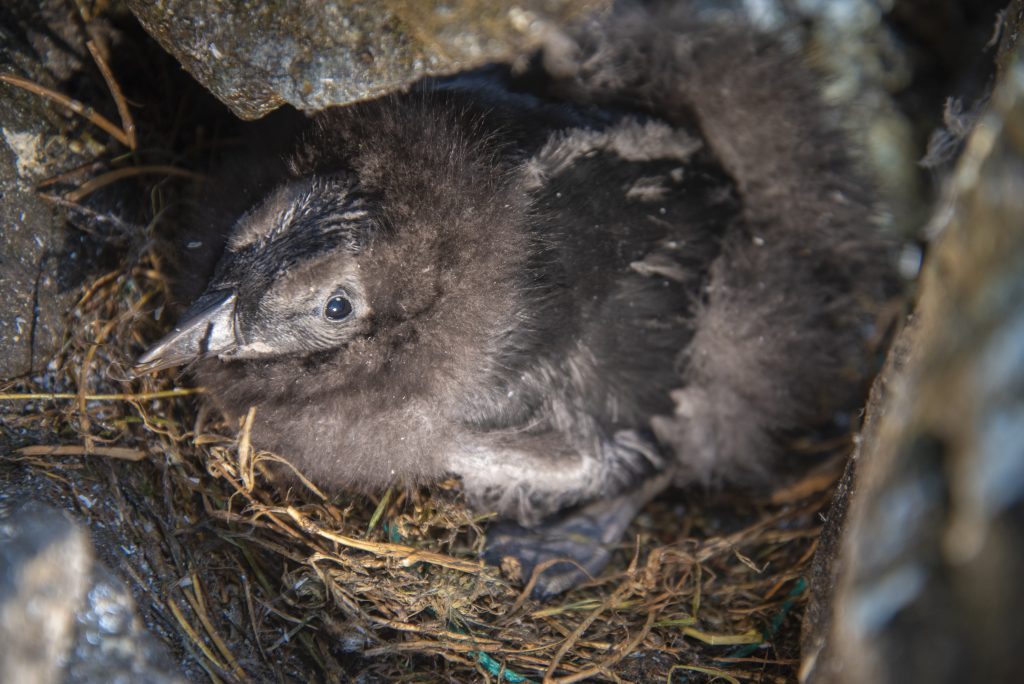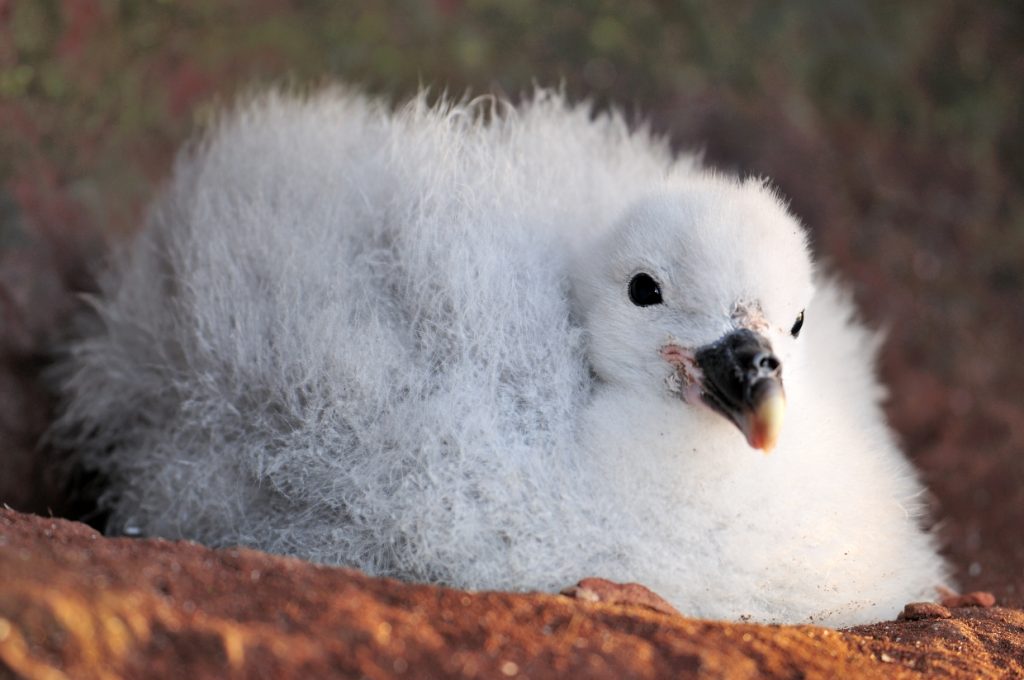Annual Lifecycle of a Seabird – a hot summer

The summer is here, and the seabirds and their parenting skills are put to a test. What are their parenting styles? And is anyone still mama-birding (so 2010)?
Chick rearing: Hungry mouths to feed
As dawn breaks over the bustling seabird colony, a symphony of squawks and chirps fills the air—nature’s very own alarm clock announcing that the chicks have hatched and they’re hungry! In these early weeks of life, seabird chicks are like bottomless pits, demanding constant attention and a steady supply of food. Take the Common Guillemot (Uria aalge), for example. These devoted parents transform into full-time caregivers, using their wings not just for flight but as cozy blankets shielding their chicks from harsh weather. All the while, they keep a vigilant eye out for opportunistic predators like gulls—and even their own guillemot neighbours who might get a little too close for comfort.
Parenting in the seabird world is truly a tag-team effort. One parent stands guard at the nest, ready to defend and comfort, while the other embarks on daring fishing expeditions across the ocean waves. The Atlantic Puffin (Fratercula arctica) showcases this beautifully. These short-winged, stocky birds return from the sea with their signature beaks full of sandeels and other small fish, delivering gourmet meals straight to their burrowed homes where hungry pufflings await.

Then there’s the Northern Fulmar (Fulmarus glacialis), which ventures far and wide across the ocean, converting the fish they consume into a nutritious, albeit foul-smelling, oil stored in their stomachs. Upon returning home, they lovingly—or perhaps unceremoniously—regurgitate this oily feast for their chicks. It might not sound appetizing to us, but for a fulmar chick, it’s pure delight!
All this hard work pays off as chicks grow at astonishing rates. A puffling, starting out as a tiny 40-gram hatchling, can balloon up to a hefty 360 grams in just six weeks! That’s an 800% increase! To achieve this growth spurt, puffin parents collectively catch around 450 sandeels every single day. While their parental duties keep them tethered relatively close to home, some seabirds still manage epic journeys in search of sustenance. The Desertas Petrel (Pterodroma deserta) is a master navigator, embarking on two-week-long voyages covering thousands of miles. They skilfully ride Atlantic wind currents, turning vast oceans into their personal grocery aisles. Interestingly, seabirds have developed savvy strategies to avoid competition for food. Species like the Northern Gannet (Morus bassanus) and Black-legged Kittiwake (Rissa tridactyla) from neighbouring colonies often forage in completely different areas. It’s as if they’ve amicably agreed on invisible boundaries, ensuring everyone gets their fair share of the ocean’s bounty.

The big leap: from nest to sea
When the time comes, these well-fed and well-loved chicks face their next big adventure: fledging. With feathers fluffed and wings strengthened, they’re ready to leave the nest and embrace adolescence. Black-legged Kittiwake chicks ease into this transition, spending a few days practicing their flying skills under the watchful eyes of their parents before venturing solo into the open sea. On the other hand, Common Guillemot chicks prefer a more dramatic exit. At just about 20 days old and with wings not yet fully developed, they take a courageous leap off towering cliff ledges, plummeting hundreds of feet towards the ocean below. It’s a heart-stopping moment, with tiny wings flapping frantically and legs stretched out behind, but most make it safely to the water where their fathers await. These dedicated dads accompany their young on the high seas, offering guidance and protection until they’re ready to fend for themselves.
Razorbill (Alca torda) fathers follow a similar paternal path, staying close to their fledglings during those critical first weeks at sea. This close bond not only helps the young birds learn the ropes of survival but also reduces risks from predators and ensures efficient feeding.
Patience is a virtue in the seabird world. It takes several years before these adolescents are ready to start families of their own—4 to 5 years for Atlantic Puffins and up to over 9 years for Cory’s Shearwater (Calonectris borealis). During this time, they often return to land, scouting out potential nesting sites. Many exhibit strong philopatry, returning to the very colonies where they took their first breaths to raise the next generation. It’s the circle of life, painted across oceans and cliffs.
Threats: Challenges on Land and Sea
Life isn’t all smooth sailing for these remarkable birds. During breeding season, invasive species like mice, rats, cats, and pigs pose serious threats, especially to vulnerable chicks who can’t defend themselves against these unexpected predators.
Out at sea, challenges continue. Although seabirds are adaptable foragers, their need to regularly return to their nests limits how far they can roam for food. Climate change and competition with fisheries exacerbate these challenges by reducing the availability of key prey species. Recognising this, conservation efforts have made significant strides. BirdLife’s UK Partner, the RSPB, successfully advocated for the closure of industrial sandeel fishing in the English North Sea and all Scottish waters earlier this year. This critical move throws a much-needed lifeline to UK seabirds, helping ensure they have enough food to raise healthy chicks.
Bycatch remains another pressing concern. A recent paper estimates that approximately 200,000 seabirds are unintentionally caught in European fishing gear annually. Addressing this issue requires concerted effort and the implementation of effective management strategies already proven successful in other parts of the world.
The rapid expansion and massive scale of offshore wind farms introduces additional risks, including collisions, displacement from feeding grounds, and barriers to natural movement patterns. Thoughtful planning is essential here—utilizing tools like sensitivity mapping can help identify and avoid the most critical habitats, allowing for the necessary renewable energy while minimising impacts on seabird populations.
Cover Picture: Northern Gannet with Chick © Ben Andrew rspb images
You might also be interested in:
 | Stichting BirdLife Europe gratefully acknowledges financial support from the European Commission. All content and opinions expressed on these pages are solely those of Stichting BirdLife Europe. The European Commission is not responsible for any use that may be made of the information it contains. |









